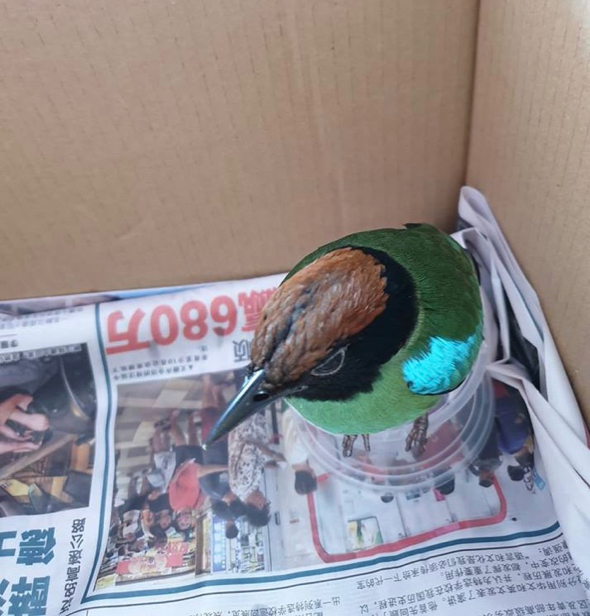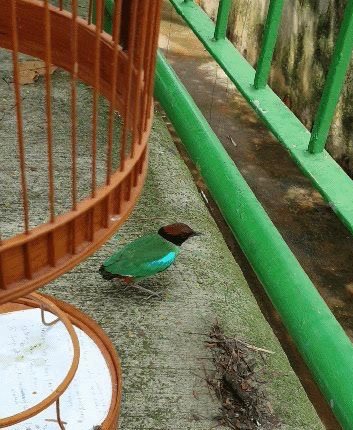
A Hooded Pitta (Pitta sordida) was found totally exhausted by Alaric Ng in early April. He placed it safely in a cardboard box and it subsequently recovered.

This is an uncommon winter visitor and passage migrant that arrives in Singapore as early as November to peak in December. It can be seen up to early May. This specimen may well be a passage migrant on the way back from Sumatra or Java to rest in Singapore before flying north.

“On day 1, the bird was still lifeless. Tried to feed it with mealworms and crickets. But I’m not sure it ate any. No water intake too I guess. Standing still and not even moving a muscle,” wrote Alaric.

“On day 2, it was much better, head turned around but still standing still and not moving. I tried to let it drink some water by wetting its beak. Wings started to flap a little. No intake of food I guess. On day 3 the bird was much more active. Jumping around and flapping wings. So it should be ready to be released.”

The Hooded Pitta subsequently flew off… to eventually find its way home in the north.
Alaric Ng
Singapore
10th April 2019
This post is a cooperative effort between Birds, Insects N Creatures Of Asia and BESG to bring the study of birds and their behaviour through photography and videography to a wider audience.









One Response
Just in case anyone has to care for a Pitta again, please note that a large proportion of their natural diet consists of earthworms. This is known to aviculturalists.
You can serve the worms in a shallow dish, complete with soil. It is natural for the Pittas to swallow some soil along with the worms.
Feeding of worms with soil is also practiced by breeders of Shama Thrushes, Magpie Robins and other songbirds that frequently forage on the ground.
Among the various Pitta species, the Hooded Pitta is the one most commonly seen in aviculture. Though no Pitta is considered an easy aviary subject, the Hooded is less fussy than the other species and will soon adapt to consuming commercially available bird food.